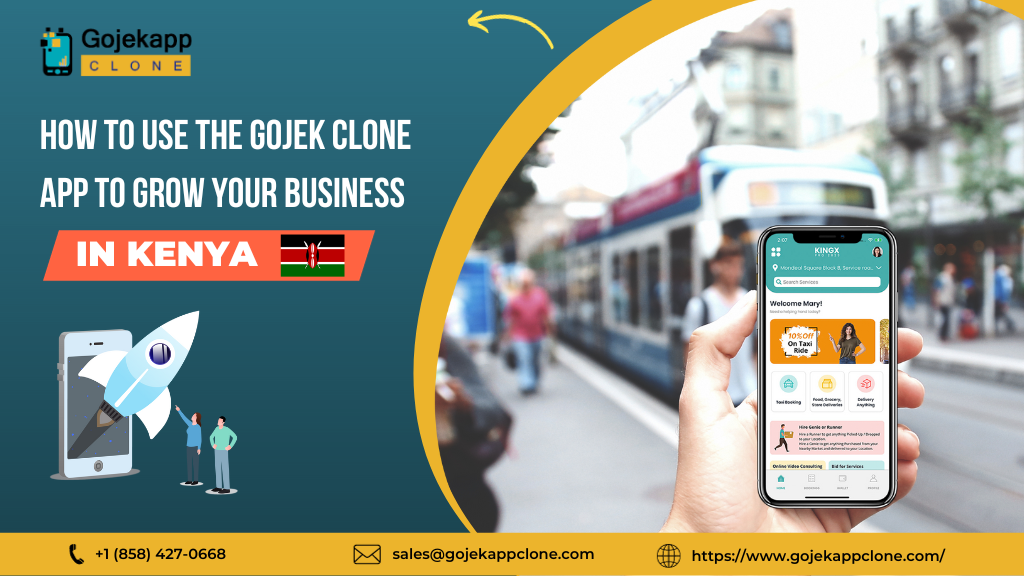Time is a big factor when it comes to choosing an Uber Clone or building an Uber Like App today.
As most of the present taxi apps offer competitive pricing and attractive incentives, launching your taxi app should be instant.
The needs of users start with an app that makes their lives easier with smart navigation and user-friendly layouts.
To start choosing the profitable road that offers stability in the long run, a good start is to analyze each process deeply.
Introduction
On-demand transportation services are accelerating at an incredible pace.
By 2027, the taxi app market is projected to have 1.92 billion users.
Many transport network companies or simply on-demand taxi businesses are expected to grow by 133% between 2022 and 2028.
Without a doubt, the taxi app industry looks promising for a business that is planning to launch a well-made app.
You, being the business owner, have to start your journey by looking through the lens of your customers.
Understand what more they need that can be easily available from your new business, known for innovation.
Advanced Features in the Taxi App
Before you choose which way to go to create your taxi app, you should know what ultimately should be in the final result.
Moreover, keep in mind that an online taxi business has three interfaces that it must cater to:
- Drivers
- Passengers
- Admins
That means each of the features you have in mind should be seamless across all platforms in the development phase.
Features For Drivers
The only reason most taxi drivers are partnering up with taxi app businesses is to bring home more income.
Apart from this, they don’t want to bother customers in front of airports, bus stands, or railway stations anymore.
With the convenient use of technology, they are able to provide on-time cab services to keep your customers satisfied.
For this, your taxi app must cater to their demands as well.
This includes:
- Keeping track of the trip history, whether completed or canceled
- List of all successful bookings made to track earnings
- Integrated Google Maps system for the fastest route navigation
- Rate and review each new customer
- It is simple to go through the sign-up process to start the verification
- Alerts and notifications
Features For Passengers
On average, a normal smartphone user has around 50–55 apps installed.
Each of these apps ranges from systems to social media, games, entertainment, news, and on-demand as well.
It is important to understand that each top-functioning app gives its users a smooth and overall rich experience.
With on-demand services in mind, especially taxi services, the need for accurate information related to cost and location is crucial.
For this, your taxi app must also include features for their needs.
This includes:
- Scheduling the trip in advance
- Easy payment process
- Multiple payment gateway options
- Effortless ride-booking as per their preferred time
- Save multiple locations to request a ride with just a single touch.
- Ride tracking history
- Reviews and feedback
- Fare calculator
- ETA and status
- Book for someone else
Features For Admins
Admins play a vital role in your taxi app business.
You, as the Admin, will play a vital role in managing the taxi business.
Most of your time will be spent regulating and updating a vast range of management decisions.
Generally, a centralized dashboard includes every key metric and KPI for them to control.
However, it is important for them to see those numbers in real time as each ride gets completed.
Furthermore, every single business process that relates to both the passenger and the driver can be accessed from the admin panel.
For this, a robust and overall fast working panel is required to match your business demands as well.
This includes:
- Complete CRM
- Revenue and Payroll management
- Data management
- Option to export data into Excel
- Vehicle/Car type management
- SEO settings on the website
- Fare, Invoice, and Newsletter Management
- Commission Tracking
- Promo Codes and Advertisement management
- Push Notification
- Driver Verification
Till now, every feature that has been mentioned for drivers and passengers is the minimum standard for any business.
Before you start developing and launching your taxi app, you must have all these features integrated to compete side-by-side.
However, this is just the start.
To bring something new to the game, your app must have cutting-edge features that encourage anyone who opens it.
But for others, some of these advanced features include
- Backup system if GPS fails
- First-in, first-out driver preference
- Set emergency contacts
- Biometric login
- Option to tip driver
- Instant in-app notification
- Automatic fare estimation
- Stop-over points
- Advanced earnings report
This list is never-ending.
In other words, finding more advanced features requires deep knowledge to solve a basic need that is highly niche.
Pre-built vs. coding: Understanding the difference
Developing an app via coding involves using different programming languages and understanding programming concepts that can be tailored ahead.
Whereas a pre-built Uber Clone is a ready-made app that needs no further development.
It has successfully added all the features to all three interfaces and needs only business details to customize and launch immediately.
Customization
When you invest years into app development to build an app from scratch using custom and original codes, the possibilities are infinite.
You start your journey with market research, finding features, designing the blueprint, and then hiring developers to start the project.
It will take years to add every little feature.
A UI/UX designer, iOS and Android developer, and quality assurance engineer will contentiously test and fix bugs.
Essentially, the cost will reach sky-high, but each custom app option will be tailored to your needs.
Whereas in a pre-built Uber Clone, everything is already there.
The only customization that will happen now is your business integration.
With the source code of the Uber Clone Script, you can easily add or remove any feature you want.
Flexibility
Adding features can help you stay in the market for the long run.
It basically means that you need a team of app developers who are willing to redo a number of changes as many times as you want.
But eventually, it all depends on the scale of the change you need to implement across all three platforms.
Whereas in a pre-built Uber Clone, most white-label firms offer 2 years of upgrades and everyday bug support.
This covers all web panels as well as iOS and Android apps.
Time and Cost
Building anything that closely resembles the Uber platform needs at least six months of design and development.
Then comes the part about adding features and working back and forth on navigation and buttons.
That’s why top-ruling tech giants spend billions on the development process.
Such massive costs usually translate to the number of working hours each professional has put in.
Whereas in a pre-built Uber Clone, it usually takes around 1-2 weeks to completely add your business details, like:
- Name
- Logo
- Splash screen
- SMS gateway
- Payment gateway
That’s it. You’re done. Time to launch by investing with a cost that took a fraction of the budget you aimed for.
Uber Clone or Custom-Coded App: Which is best?
By taking in factors like development time, cost, feature customization, maintenance requirements, and much more, the best approach really depends.
See, if you are in a position to spend an excessive amount of money religiously, then march forward and start hiring people.
However, seeing the competitive market it has been in so far, it is recommended to launch as quickly as you can.
Overall, Uber Clone is a ready-made version of what you want your platform to be, except it has been developed by someone else.
If you are not interested in the development scenario, simply buy the Uber Clone Script and rebrand it as your own business.
Conclusion
Keep in mind that you are not entering in a new market.
The key here is to fight with the limited amount of services each business has with a strong value proposition.
Sometimes, it’s not about the platform but how you manage it with quick adaptability and smart business deals.
Lyft did this to Uber in its home country of the US and has laid the foundation for others as well.
The only obstacle standing between you and them is your strength and determination to launch an app and stick to it.



